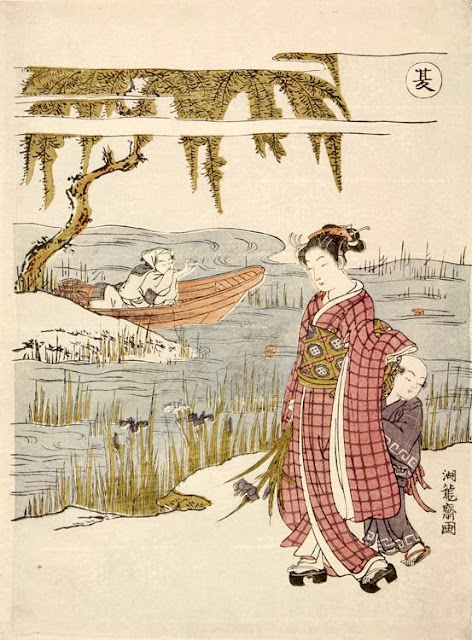 |
| Isoda Koryusai: Dragon |
Isoda Koryusai (1735-1790) was the artistic heir of Harunobu, although it is not known if he was ever Harunobus student. In my opinion, Koryusai is an underestimated artist. Harunobu, before him, and Kiyonaga, after him, tend to get most of the attention.
The Dragon above is not typical for Koryusai's art. Indeed, originally it is not his picture, but a copy he made of a painting by Ganki (a 14th century Zen painter), The text at the top states "Painted by Ganki". It is also signed "Hokyo Koryusai sha", which means "copied by Koryusai".
I have not seen Ganki's original painting, but I am fascinated by Koryusai's copy. This dragon, a creature of magic and legend, might very well be the one compelled by the Chinese Sennin Chennan (or Chinnan) to rise from the mud and open "the cataracts of heaven" over the village of Sogo, where people were praying for rain.
Koryusai is considered as the second master of nihiski-e, brocade prints, or full-colour prints, but the (almost) monochrome nature of this picture definitely adds to its fascination. Yet there is limited colour manually added on fangs and claws, although that is barely discernible.



